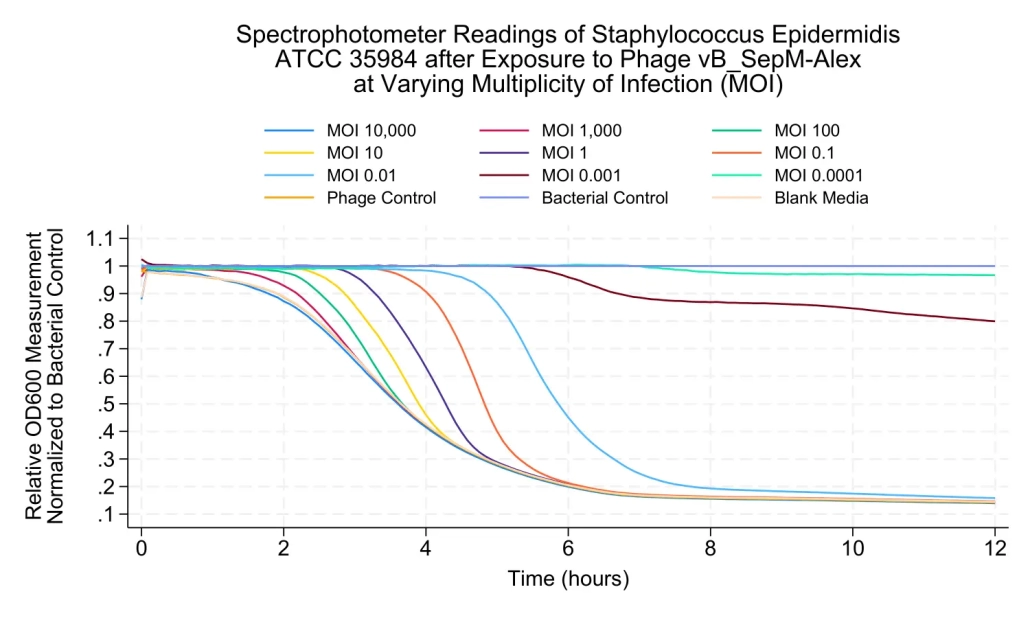Bacteriophage Dosing and its Effect on Staphylococcus Epidermidis Growth Suppression: An In Vitro Study
Author(s):
Jason Young; Mohammad Javad Sharyiate; Siân Owens; Ara Nazarian; Edward Rodriguez
Background:
Treating prosthetic infections involves addressing bacterial biofilms, with phages emerging as a potential therapy. Challenges include an incomplete understanding of optimal phage dosing. Some studies suggest higher dosing reduces bacterial persistence, while others posit high phage dosing elicits selective pressure accelerating resistance development.
Hypothesis:
Our in vitro study assesses how phage dosing (Multiplicity of Infection, MOI) impacts bacterial growth in planktonic and biofilm conditions using a Staphylococcus Epidermidis (S. Epi) model. We hypothesize that higher phage dosing is associated with greater bacterial growth suppression.
Methods:
For our planktonic assay, S. Epi ATCC 35984, a known biofilm forming strain, was combined at exponential phase with phage vB_SepM-Alex, an obligate lytic phage specific to S. Epi, at varying concentrations. Bacterial growth was tracked over 12 hours using a spectrophotometer (SP) calibrated to ATCC 35984 growth. For our biofilm assay, ATCC 35984 was grown in 96-well polystyrene plates for 48 hours and subsequently exposed to 1) phage at various concentrations, 2) vancomycin at 15 micrograms per mililiter (mL), or 3) both. Plates were washed and stained with 0.1% crystal violet and spectrophotometer readings taken at 12 hours. Kruskal-Wallis Tests with Dunn’s pairwise comparisons were performed with Bonferroni corrections to assess differences in planktonic and biofilm bacterial growth at 12 hours post-phage exposure. Alpha was set at 0.05.
Results:
In our planktonic analysis, bacterial growth was significantly higher when MOI<=0.01 compared to MOI>=10 (p<0.05). In our biofilm analysis, wells with phage dosing at <=104 plaque-forming units (PFU)/mL had significantly greater SP readings than those dosed at 1010 PFU/mL (p<0.05). No differences in mean SP readings were observed between various phage doses when given with vancomycin.


Conclusions:
Our findings suggest lower, not higher, phage dosing is associated with greater bacterial persistence. However, differences in phage doses do not impact bacterial levels when co-administered with antibiotics. Our study helps inform dosing and delivery of this novel form of antibiosis.
